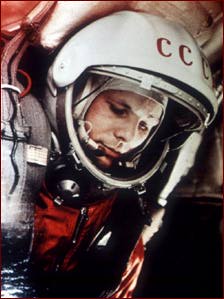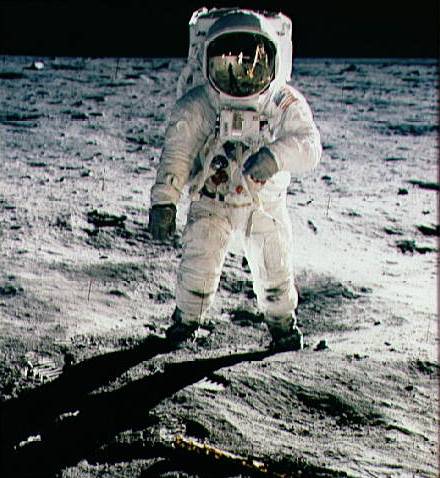|
|
||||||
|
(AP/New York Times) |
||||||
|
The Quest |
||||||
| FTLComm - Tisdale - Monday, February 3, 2003 | ||||||
The reentry into the Earth's atmosphere from orbit is
totally unrelenting, orbital speed is about 18,000 miles per hour and the friction
of the air on the reentry vehicle builds up unimaginable temperatures. Since the
first trip into space by Yuri Gugarin (April 12, 1961) and every flight since, the
launch atop an explosive fuel tank is a walk in the park compared to reentry Three American
astronauts were killed in an accident during the early days of the Apollo programme
when a capsule they were testing incinerated. The space shuttle Challenger
was destroyed killing its crew of seven. I was principal of a high school in the
Yukon at the time and remember the horror of that event caught live on television.
The morning flight break up of Columbia on Saturday took the lives of seven
more. Three American
astronauts were killed in an accident during the early days of the Apollo programme
when a capsule they were testing incinerated. The space shuttle Challenger
was destroyed killing its crew of seven. I was principal of a high school in the
Yukon at the time and remember the horror of that event caught live on television.
The morning flight break up of Columbia on Saturday took the lives of seven
more.Early findings report of a rapid build up of heat on Columbia's left wing near the wheel well and then over Texas the aircraft experienced catastrophic structural failure. Human life and the activities of most of us involve danger and we know that each day, people's lives are ended long before they should have by one reason or another, but these seven and the ten before them are different. Every person looks up into the vast and seemingly endless emptiness of space and wonders are we alone or is life as we know it common and normal for a planet like our own? There is perhaps no other question more important. As fundamental as the meaning of life, as simple as our presence is here may seem, it is a quest that must be taken up and to do that ,we must have people leave the planet and venture out into space. Every pilot who straps themselves into a flying machine and leaves the ground either swiftly or slowly, knows they are defying gravity, the most obvious and least understood force we can experience. Flight defies the rules of nature as man and machine use the intellect that humans possess, to transcend from being a terrestrial being to one able to rise above the ground. This year marks only a hundred years since as a species we have been able to accomplish this feat with machines heavier than the air in which they fly. But how much more impressive was the cost, energy and collective will power to hurl a human, not only above the surface of the ground, but to go beyond the earth's atmosphere. In the past forty years it has been done over and over and as mentioned, not with out mishap. This quest must continue for the answers to the burning questions here are clearly out there.  Step by step
it is inevitable that human beings must develop space technology and move far beyond
the primitive chemically fueled machines like the one that tragically came apart
Saturday morning forty miles above the flat plains of South Eastern Texas.
The cost of this quest should not be in lives of those who go forth on our behalf,
but must be from the civilisation that covers this globe. The trivial political and
economic quarrels that waste energy, resources and human lives are inconsequential
in the greater scheme of things and humans have never stood taller than when they
reach for the unknown, when humans strive to open the knowledge and experience frontier
they unite all of us, no matter what social, ethnic or cultural inclination, we are
all people and we have the responsibility to find out what we as a species, can accomplish....together. Step by step
it is inevitable that human beings must develop space technology and move far beyond
the primitive chemically fueled machines like the one that tragically came apart
Saturday morning forty miles above the flat plains of South Eastern Texas.
The cost of this quest should not be in lives of those who go forth on our behalf,
but must be from the civilisation that covers this globe. The trivial political and
economic quarrels that waste energy, resources and human lives are inconsequential
in the greater scheme of things and humans have never stood taller than when they
reach for the unknown, when humans strive to open the knowledge and experience frontier
they unite all of us, no matter what social, ethnic or cultural inclination, we are
all people and we have the responsibility to find out what we as a species, can accomplish....together. In August
of 1969 when Buzz Aldrin and Neil Armstrong used the resources of the
United States to prove the political point that Western Democracy was somehow
more advanced than the East Bloc, only a year after the Tet Offensive,
while young Americans and young Vietnamese blew one another up in a God forsaken
paddy field, Armstrong, who had poured over what he should say when he took the first
step on the the moon's surface screwed up the line he had so carefully worked out, "That's one
small step for man, one giant leap for mankind." Despite the cold war
and the war in Vietnam the test pilot/aeronautical engineer, got it right
and all around the world people reflected on the achievement of our race. In August
of 1969 when Buzz Aldrin and Neil Armstrong used the resources of the
United States to prove the political point that Western Democracy was somehow
more advanced than the East Bloc, only a year after the Tet Offensive,
while young Americans and young Vietnamese blew one another up in a God forsaken
paddy field, Armstrong, who had poured over what he should say when he took the first
step on the the moon's surface screwed up the line he had so carefully worked out, "That's one
small step for man, one giant leap for mankind." Despite the cold war
and the war in Vietnam the test pilot/aeronautical engineer, got it right
and all around the world people reflected on the achievement of our race.The seven who died on Saturday will be missed, and their achievements will not be forgotten, but the quest must continue and political leaders all around the world need to realise that a struggle to win against the odds of the vacuum of space, to overcome the heat of reentry, to overcome the perils of the almost infinite time needed to make journeys beyond our solar system, these goals far out weigh gaining control over a patch of desert, or the oil resources which lie beneath. Lift up your eyes to the heavens, for surely that is our future. |
||||||
| References: | ||||||
Broder, John M. Temperature Rise in Last Minutes, (PDF) February 3, 2003, New York Times |
||||||
Timeline of space explorations |
||||||
| Cybersurfari, Armstrong quote. | ||||||
|
|
||||||
|
|
